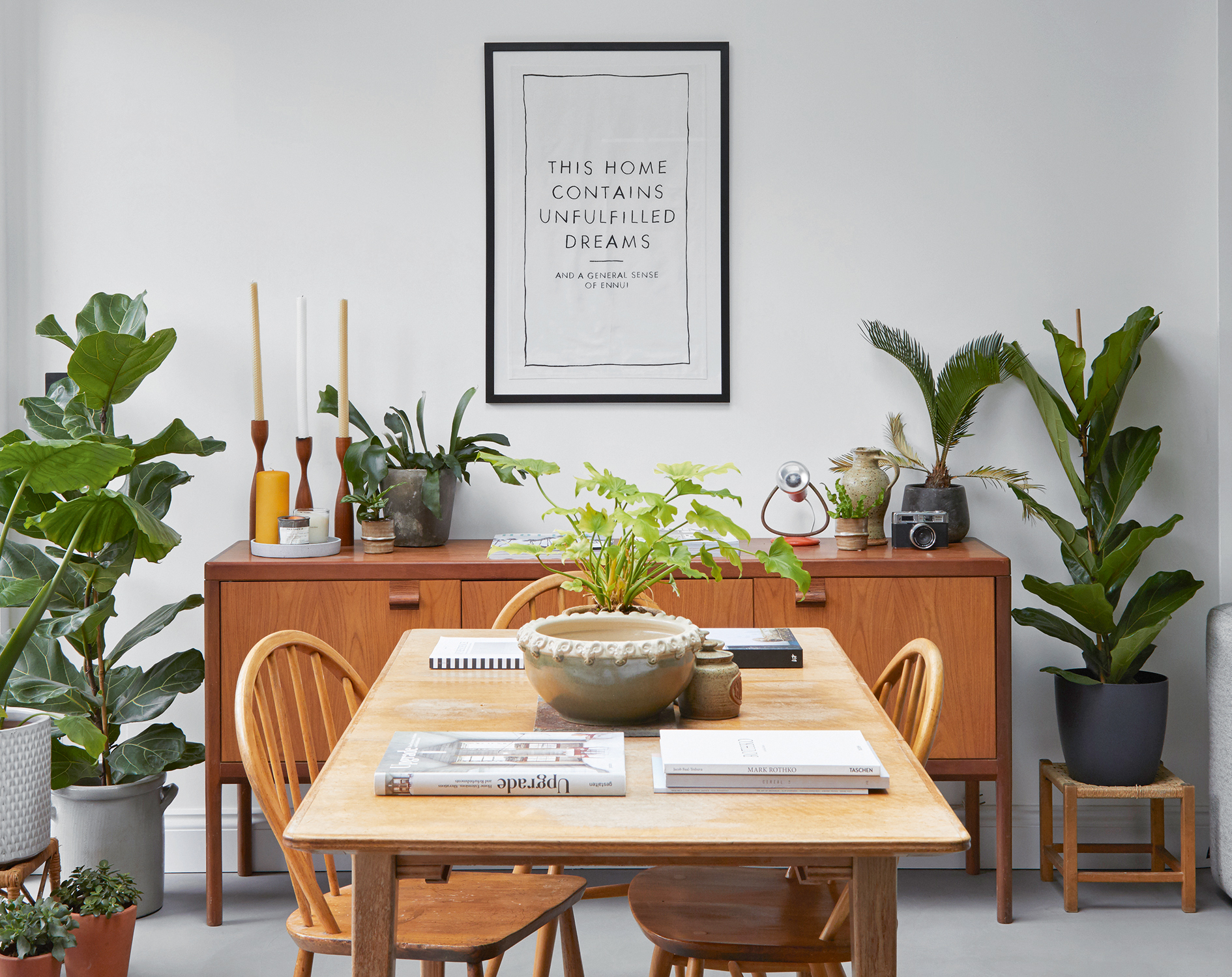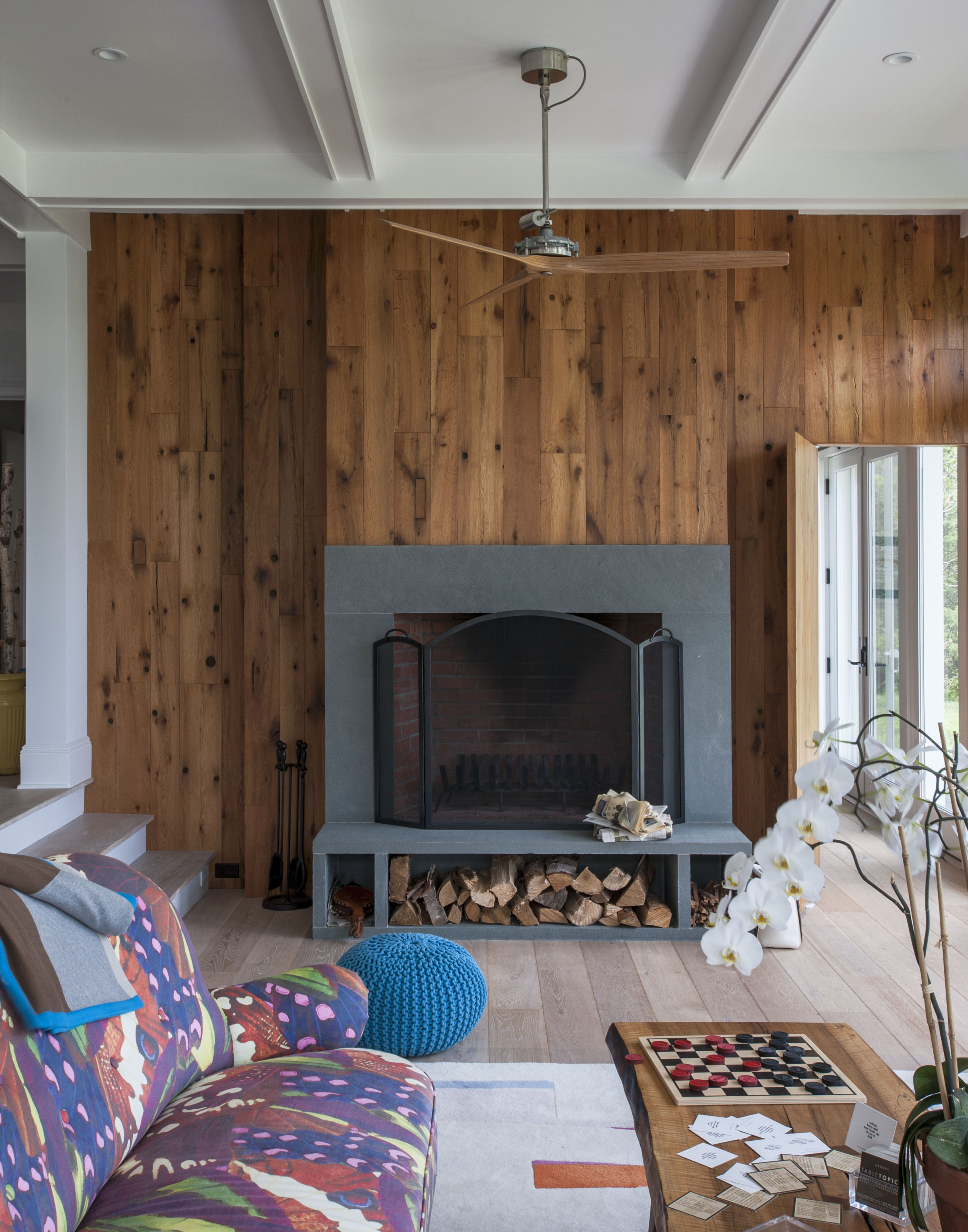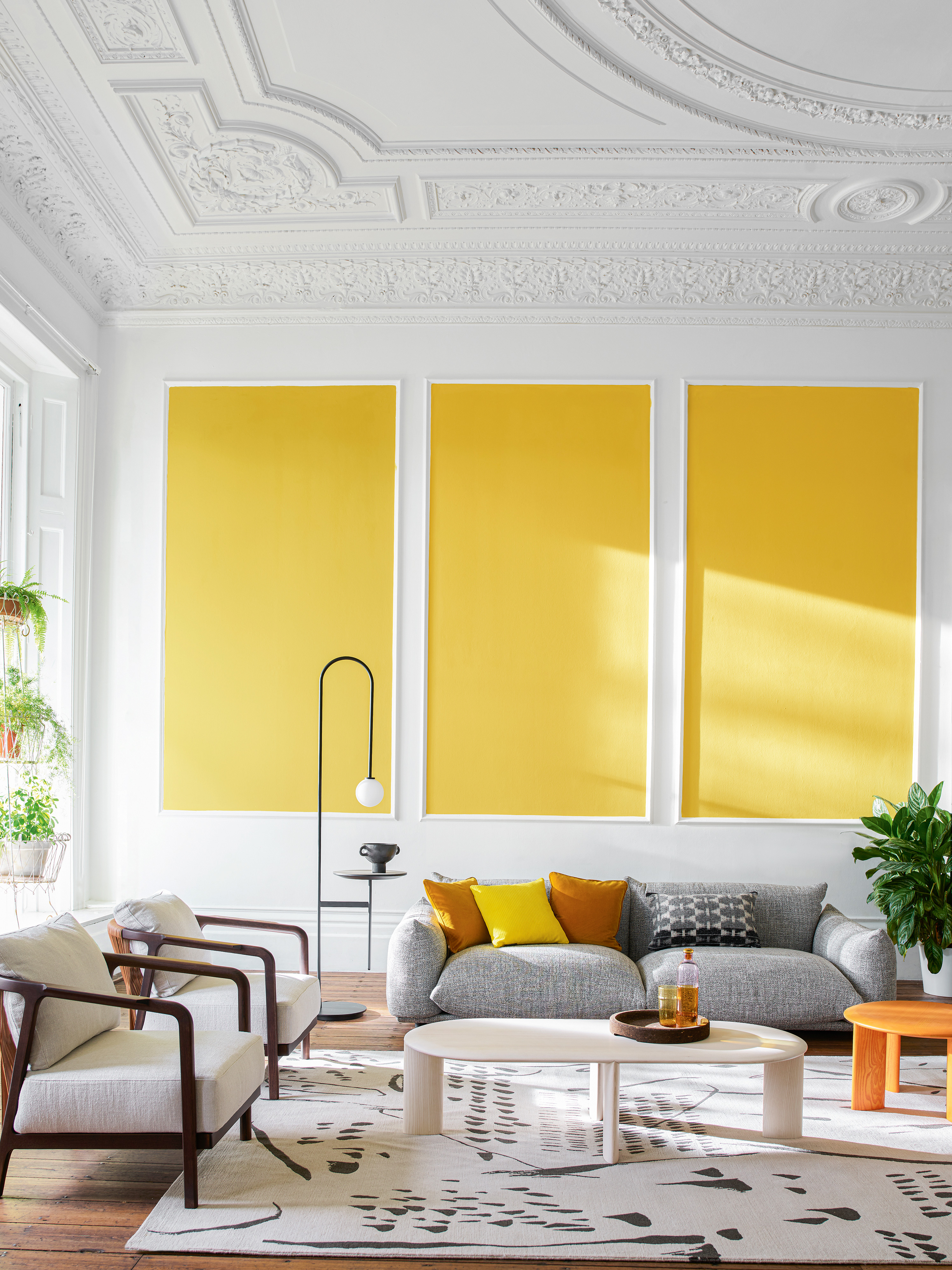How to meditate at home - 10 decor ways to create the perfect meditation space
Using design as the key to how to meditate at home will help you make a space you want to relax in

There are tricks for how to meditate at home. It would be lovely to think that, like a monk, we could meditate anywhere we find ourselves. But that’s just not the case. You might have already discovered that it’s not easy to make meditation into a regular habit. So, anything that is going to make it feel easier or enhance the experience, is worth trying.
‘I like to think of meditating as like clearing your home screen on the computer or doing a little tidy of your brain. It gives you a little time to step out of your reeling thoughts and create a little space,’ says Nadia Narain, yoga teacher, author of Self Care For The Real World and co-founder of Love Supreme Projects. And so, you want beauty and calm where you do it, not to be looking at a pile of washing or your unsorted post, for example.
However, don’t think you need sit in an empty space, the traditional cliché of zen. There are as many ways of doing meditation as there are people. ‘There’s a stereotype of mediation, of sitting with your back straight in a quiet, dark space in the lotus position,’ says Will Williams, founder of Beejameditation. ‘But that isn’t necessarily very relatable or accessible to most people.’
When it comes to meditation, it’s about personalisation too. These are some design tricks that can help you get into a more zen frame of mind, and hopefully to have a more regular practice.
How to meditate at home
1. Find your spot

‘I’m all in favor of having a place to meditate, whether it’s the corner of a room or a space on the sofa,’ says Kirsty Gallagher, author of Lunar Living. Because one reason people don’t stick to their practice, she says, is that they don’t have a dedicated space. ‘The clue is in the name: practise. It’s a daily dedication. And just like we have our beds to sleep in, it helps to create a sacred space for meditation in your house.’ Simply going there will put you in the zone. However, if space is tight, having a designated mediation cushion you put in the same place can be enough, she says.
Kristin Perers is a photographer, stylist and author who’s exploring the theme of what it means to bring the sacred home. She has tried out a few meditation spots in her house. ‘There might be a few places that call to you, that feel peaceful. I have one that is better in the summer, and one for the winter. I follow the light. It’s quite magical when you can, say, catch the flickering light on the wall from the setting sun.
2. Bring nature inside

Take a multi-sensory approach to designing your meditation space. ‘You want to deliver on each of the senses. Because each one is an opportunity to enhance your level of present-ness,’ says Oliver Heath. He’s author of Design a Healthy Home and a Biophilic Architectural and Interior Designer. The principle of biophilic design is to enhance the connection with the natural, with light, space and natural elements, all of which makes for a more relaxing meditation space.
The Livingetc newsletters are your inside source for what’s shaping interiors now - and what’s next. Discover trend forecasts, smart style ideas, and curated shopping inspiration that brings design to life. Subscribe today and stay ahead of the curve.
Oliver’s company recently designed The Re:Mind Centre, a commercial meditation space which has the kind of design we can only dream of for our own spaces. At one end of the main meditation room, there’s an installation of Himalayan rock salt lamps. ‘They give off a glow similar to the light at dawn and dusk, a soft pink that’s calming and relaxing,’ Oliver says. And at the other there’s a living wall.
However, you can bring some natural elements into your home. Pattern is one way, for example. Re:Mind’s floor is made from engineered Douglas fir boards with a white Osmo oil finish. ‘The patterns on the wood are biophilic fractals, the kind of recurring pattern that you see in nature a lot. For example, how a tree subdivides into branches, then into smaller branches, and you see them again in the leaf. It’s a way of adding pattern, texture and richness. They create a strong visual feel but because they are in nature, they give you sense of familiarity that you don’t find in, say, geometric patterns.
3. Add lots of greenery

Plants are the most obvious way to bring in nature. ‘Any natural things will charge the space with the right energy,’ says Kristin. ‘It’s good to keep the energy alive and charged. A flower or a plant will charge the space with energy while you’re not there. They are like a greeting when you walk into your meditation space.’
She likes to fill all her rooms with scented geraniums. ‘My background is Swedish, and my cousin told me that there they call them healing plants, and always put them in a room when someone isn’t well, to clear the air.’
All green things will clean the air. But a 1989 NASA study that named particular house plants as being better than others hasn’t been replicated. Newer research suggests you’d probably need a whole green wall to make any significant difference. But that doesn’t mean a few plants isn’t a good thing. They do remove some toxins, plus they help keep humidity and temperature even, too. Try the peace lily, ivy and monstera.
4. Build a personalized altar

The purpose of an altar is to give your meditation a focus. But it can also make it feel more special and sacred. ‘We have a lot of routines in our lives, but very few rituals. That is where the magic comes in, making your mediation a little more mystical, so you’re doing it for growth and expansion. ‘I change my altar every month with the moon,’ says Kirsty.
Your altar can be as simple or as complicated as you wish. ‘It can be postcard and a candle. It is nice to elevate it, on a small stool for example, so it’s at eye level when you’re sitting on the floor.’ What to put on it? Kristin suggests postcards, incense, a candle, incense, and a natural object such a shell or a blossom plucked from the garden.
Kirsty Gallagher likes to precede her meditation with a little ritual. ‘This sets the intention that this is something I’m going to bring all of my attention to with reverence, rather than just closing my eyes even if it’s only for five minutes.’
She starts by lighting a candle, then setting a stick of Palo Santo wood to smoulder. ‘This cleanses the space,’ she says. Or if not, she might light some nag champa incense, the scent often used in Indian ashrams, or frankincense, used in churches. Finish with some tea: Pukka Tulsi Clarity contains holy basil, an Ayurvedic herb used for giving calm clarity.
5. Make your space sound beautiful
Soundproofing a room will help you meditate. Make sure you have plenty of soft, absorbing surfaces, as these help reduce distracting outside noises, says Oliver. If you can’t reduce noise coming in, you can sound mask it.
‘Use pink or natural noises, such as running water, birdsong, leaves rustling or fire crackling,’ he says.
You can mix your own natural soundtrack with the Noisli app, which we've reviewed as one of the best sleep apps. Too loud can be distracting and it’s best to have a visual to back up the noise. For example, if it’s fire, to have a candle burning.
6. Cheat with a gadget
There are also clever gadgets on the market that help you get into the meditative state, no effort required. Sensate, $249, is a wearable device that taps into the vagus nerve, which acts as the switch that takes us from fight or flight into relaxation. You simply lie down and place it on your chest, and it produces ripples of sound and vibration that you can’t hear but that your body loves. Plus you can add soundscapes too, including for meditation.
You can also supercharge the recharging benefits of meditation by doing it lying on an infrared HigherDose mat, $1095, which emits a pulsed magnetic frequency that copies the earth’s natural frequency, plus it’s infused with crystals, too.
7. Create the mood with color and light

There are different ways to work with color when you meditate, according to Walaa, a colour therapist who lives in Barcelona, and author of Heal Yourself with Colour: Harness the Power of Colour to Change Your Life.
‘Colors don’t exist, they are simply translations by your brain of different wavelengths of light. And so different colors speak to the subconscious mind, producing different emotions and thought patterns,’ Walaa says. ‘And so the vibration is a way to affect your mood.’
Walaa divides meditators into three types. The first type working on focus and mastering their mind. Their colors are yellow, as well as orange and red. ‘Yellow is good to sharpen the mind and stimulate the mind. It grounds you in your body, and stimulates your brain to help with focus and concentration. The same is true of reds and oranges, she says. ‘Your phone and screen are blue light, and being in red light can balance that.’
The second type of meditator wants to dive deep, to release and clear, to use meditation as a time to work on themselves. ‘If that’s you, you will suit darker colors, to help you go within. Black in particular will help taking in what you are learning.’
And the third type is people who want to bring in gratitude, to start their day on a positive note. ‘This type should use pastels especially pinks. Pink aligns with the same vibration as softness and compassion and opening up.’ This is the light you’ll get from the Himalayan quartz lamps, mentioned above.
The obvious way to use colors is on room accessories, such as rugs, lampshades and cushions. Kristin Perers paints a color backdrop for her altar, and now, she’s using Giallo by Little Greene.
You can also decorate your space or altar with colored smart light bulbs or candles. There are colored lights, such as Philips Hue Portable, which changes colour using a remote control. Or there are mood lights. Kristin has bought some battery-operated candles that come on with a timer from Lightli, which have a pretty light that flickers. ‘You can set the timer to come on just before your meditation, so that when you see it come on, you know it’s time. I’ve found it to be a nice reminder. And especially if you have an early morning practice, it’s lovely to have a candle already lit there, welcoming you.’
8. Harness the power of scent
‘Scent is a bridging tool to get you into the right state for meditation,’ says Emma Cannon. ‘Scents evoke memories, including of all the other times you meditated. But they’ve also been shown to stimulate certain areas of the brain too.’
You can use different blends of essential oils as your home fragrance, depending on how you feel. Emma buys hers from Alchemist oils. ‘I like the quality and the blends, and the creator is a chemist and an alchemist, deeply rooted in the tradition of the oils. It’s like wine; you can really tell the difference when you smell really good oils.’ She puts them directly on the skin, but you can heat them in a vaporiser, too.
I use Alchemist White Light blend when I only want things of a high vibration to come into the space. I use Abundance when I’m feeling a little lacking, or stuck. And I use Violet Flame if I’m feeling heavy.
Elena Brower, an author, mentor, podcaster and yoga teacher in New York, applies DoTerra Balance Oil Grounding Blend to her pulse points, soles of her feet and the sides of her neck. ‘It’s full of trees and flowers to steady and open my mind.’ Or she’ll use the Align or Arise blends. ‘Both are part of doTERRA’s Yoga Collection, $69.33. ‘These are super uplifting, great for focus and flow of mind. I will typically inhale those from the bottle or put a few drops in my diffuser.’
To scent the room gently, use a water based diffuser, such as the doTERRA Volo diffuser, which comes in Marble or Onyx, $78.67.
9. Sit comfortably

Do you prefer an accent chair, a mat or a cushion? It’s key to be comfortable, as you’re going to spend hours there. Kirsty has a meditation cushion filled with beans. You can use a normal cushion although you’re going to have to sit on it for hours, so it needs to be comfortable.
If it’s cold, have a blanket handy, too. ‘There’s a tradition of prayer shawls that women used to make and put on in cold churches,’ Kirsty says. ‘When you are sitting, it’s comforting to have a special wrap to put on and cocoon yourself. It could have meaning, for example something you’ve picked up while travelling.’
10. Use a touchstone
‘Crystals are wonderful to hold' says Elena Brower. 'First, they give you an anchor. Because they are tactile, they act as a touchstone that grounds you and brings you into the present moment. Second, you can think about them in terms of their energy. All things are made of energy, but whereas our energy will fluctuate depending on how we’re feeling, crystals hold a stable energy frequency that helps balance us.’
Her favourites are: Sodalite. ‘This is good if you’re feeling anxious, overwhelmed or overthinking, as it’s calming. Rose quartz. ‘Use this if you need more loving in any form – self-love, giving love to the world. Amethyst: ‘Again, this is very calming and soothing. But it’s also spiritual, as it connects to higher consciousness.’ Selenite: ‘This is amazing for calming, cleansing and clearing, helping to cleans emotions out of our aura and energy field. The dark stones, such as smoky quartz, hematite and black tourmaline. ‘These help you get still and come back into a sense of peace.’
What's a good daily meditation to use?
Spiritual mentor Emma Cannon says that if you’ve tried and failed to meditate, you may be missing something that would make it easier. The main point all these teachers made, is that you can make meditation your own.
‘Don’t think you should feel intimidated by meditation, it can take many forms,’ Emma, before suggesting you do the following:
Find a place where you won’t be disturbed. It’s traditional to sit, but the most important thing is to be comfortable, so lie if you prefer it.
Turn your phone to airplane or do not disturb. Even better, put it in another room.
Light a candle, if you wish. Set a timer. People often do twenty minutes, but start with five minutes a day.
Close your eyes. Focus your attention inside.
Allow any background noise or disturbance to slip away.
Your thoughts will keep coming. Witness them as if they are part of you, but not you.
Do not attach to them; simply acknowledge them. ‘Oh, there’s another thought’.
If it helps keep your mind occupied, you can follow your breath as it goes in and out.
Be curious without trying to change anything. Be quiet and peaceful.
Brigid Moss is one of the UK's most respected health, wellness, and lifestyle journalists. She has been a health journalist for 30 years and has written hundreds of articles for magazines and newspapers, including the Daily Mail and The Times, and has co-written many best-selling books about health and wellness that have been sold worldwide.